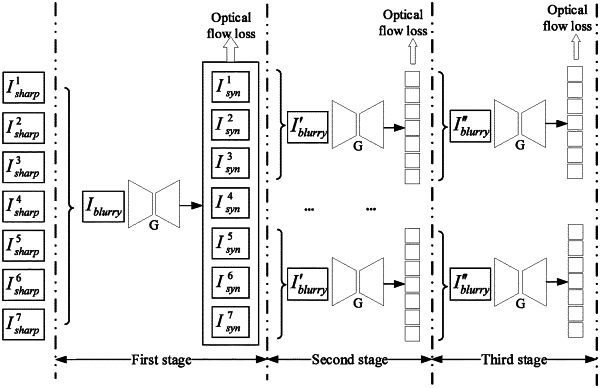| CPC G06T 5/002 (2013.01) [G06N 3/045 (2023.01); G06N 3/084 (2013.01); G06T 5/50 (2013.01); G06T 7/254 (2017.01); G06T 2207/20081 (2013.01); G06T 2207/20084 (2013.01)] | 20 Claims |

|
1. An image processing method, performed by a computer device, the method comprising:
training an initial network to obtain a first network;
processing a first sample image that includes a blurry object using the first network to obtain a plurality of first processing images having definitions greater than that of the first sample image;
synthesizing at least one second sample image according to the plurality of first processing images;
training the first network to obtain a second network;
processing the at least one second sample image using the second network to obtain a plurality of second processing images with definitions greater than that of the at least one second sample image and including motion differences of the object;
synthesizing at least one third sample image according to the plurality of second processing images;
training the second network to obtain a third network;
processing the at least one third sample image using the third network to obtain a plurality of third processing images having definitions greater than that of the at least one third sample image and including the motion differences of the object and recovering hidden information in the at least one third sample image; and
processing an original image using the third network in response to receiving an image processing instruction, to obtain a plurality of target images from the original image.
|